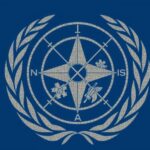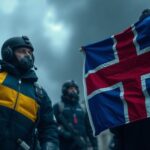Nordic Countries Issue New Crisis Preparedness Guidelines Amid Security Threats
Sweden, Finland, and Norway are issuing updated guidance on crisis preparedness due to increasing security threats, particularly from Russia. Sweden’s pamphlet instructs citizens on preparing for war, while Finland provides online resources on defense readiness. Norway encourages self-sufficiency amid extreme weather and potential conflict. Public response varies, reflecting a broader regional commitment to preparedness in uncertain times.
On Monday, millions of citizens in Sweden will receive a newly updated pamphlet titled “In Case of Crisis or War,” detailing how to prepare for potential conflicts or crises. This update, the first in six years, reflects the heightened security concerns stemming from Russia’s invasion of Ukraine and has resulted in an expanded booklet. Neighboring Finland has issued online guidance regarding preparedness for threats, while Norway has distributed a pamphlet recommending citizens maintain supplies for a week amid extreme weather and potential warfare. Denmark’s emergency agency has similarly provided crisis preparation details to its adult population. Finland’s digital guide meticulously outlines governmental responses during an armed attack, assuring citizens of adequate defense preparedness. Sweden’s recent accession to NATO marks a significant shift in its defense policy, prompted by escalating threats from Russia. Unlike Sweden and Norway, Finland opted against distributing paper copies of its advice to conserve resources. Norway has prioritized physical pamphlets, sending out 2.2 million copies to households in light of growing risks from climate change and extreme weather events. The origins of Sweden’s emergency pamphlet date back to World War II and have evolved through the Cold War. In light of recent global developments, Civil Defence Minister Carl-Oskar Bohlin urged the need for public awareness and preparation in light of possibilities of conflict in Sweden, while Finland remains steadfast in its defense while the public grapples with the reality of potential warfare. The guides provide a framework for self-sufficiency, urging citizens to prepare for various scenarios, including power outages and food shortages, as evidenced by checklists recommending essential supplies for survival. Public sentiment towards these guidelines varies, with some residents expressing mild concern, while others, particularly those with family ties back in Finland, feel a notable unease regarding the implications of armed conflict on their lives.
In recent years, the security climate in Europe has drastically shifted, primarily due to the resurgence of aggressive military actions particularly linked to Russia. This shift has prompted Nordic countries, including Sweden, Finland, and Norway, to revisit their crisis and emergency preparedness protocols. Sweden’s issuance of a comprehensive preparedness pamphlet reflects a recognition of the realities of modern threats, while Finland emphasizes its historical perspective on the necessity of strong defense mechanisms. Norway has also initiated campaigns to ensure its population is equipped to handle crises, indicating a communal approach towards self-sufficiency in uncertain times.
The release of updated crisis preparedness materials by Sweden, Finland, and Norway underscores a regional acknowledgment of growing security threats, particularly from Russia. These guides aim to instruct citizens on self-reliance in emergencies, fostering a sense of readiness in an unpredictable global landscape. As tensions in Europe persist, such initiatives are not merely precautionary measures but crucial steps towards ensuring public safety and resilience amidst potential conflict.
Original Source: www.bbc.com








Post Comment